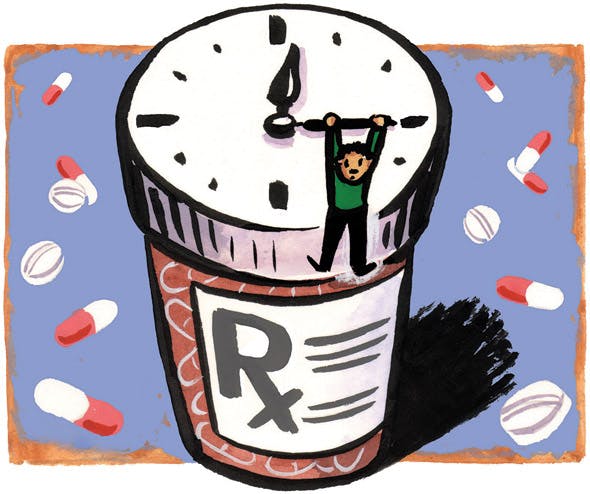Leave it to Jennifer Benz to drill down into why this year’s benefits open enrollment period is a little more critical than most.
As founder and chief strategist of Benz Communications (and a contributor here at TLNT), she clearly knows the benefits landscape. And from her perspective, when you consider the dual impacts of health care reform and an uncertain economy – combined with renewed corporate focus on wellness and health care consumerism — she says that relying on the ‘the same old stuff’ for open enrollment communication is no longer sufficient.
“While health care reform has been relatively quiet this year, the media and political scene has not, leaving your employees with more questions than answers,” Benz says. “And, most employers are looking farther ahead, toward excise taxes, state exchanges and even higher incentives for wellness plan participation. Whether you’re focused on a single aspect of your program or the whole thing, the forces driving change are broader than they’ve ever been.”
“Clearly, the era of ‘we’ll take care of everything for you’ is over and ‘we’ll help you find your way’ is here to stay. Employers have a responsibility to educate employees about making good short-term decisions and helping them see the longer-term picture of how health and financial security stack up,” she says.
So, how can HR and benefits managers communicate to employees this year? Here are Jennifer’s five tips for the 2011 open enrollment campaign. It’s good stuff to think about if you are one of the many HR pros struggling with this and your own employees:
Purposeful
Neither your company nor your employees can, in one simple or even complex action, solve any of the countless systemic problems related to health care costs. Yet, there are concrete, simple actions that do help control costs — in both the short- and long-term.
Keeping the focus positive and on what’s within reach encourages and motivates employees and their families — and makes health care reform an opportunity. Focus on the tangible behaviors that impact your employees’ pocketbook and your bigger health care picture, such as: getting preventive care, participating in biometric screenings and other wellness programs, enrolling in more cost-effective plans, switching to generics, using the prescription mail order program, and taking advantage of accounts like FSAs (flexible spending accounts) and HSAs (health savings accounts).
Also, use enrollment as an opportunity to promote those programs your company continues to invest in that are largely unnoticed and underused by employees.
Personal
Whether you’re trying to explain a new program or re-engage employees in existing programs, you now have a tougher time than ever getting them to pay attention. What works is focusing on their needs — not the company’s – first, and providing meaningful examples.
Many companies are putting their efforts behind getting people to voluntarily elect consumer-driven health plans among existing offerings or offering no other choices. In either scenario, make sure you give personal, real-life examples of how the plans work.
For instance, employees with family coverage need to be clear about how the family deductible works. Those with a chronic condition may appreciate free preventive medicines for the first time. Highly compensated individuals will be interested in the investing options in the HSA and how to shelter the maximum amount from taxes. And, all of them are going to have a lot of questions long after enrollment is over.
Simple
As in previous years, keep open enrollment communications simple and direct. Employees don’t use or understand benefits jargon. Constantly question your communication style; are you using every-day, real-life language as simply as possible?
Define terms. Repeat concepts. Try different formats to say the same things. Don’t overwhelm with too much print. Use visuals. And keep in mind: bullet points, graphics, charts, and Q&As are your – and their – understanding-enabling buddies.
This is especially important as benefit plans become more complex. A results-based wellness program or value-based plan design needs to be communicated in a way that makes sense to employees, without raising their suspicion or fears.
Frequent
Not only is our news cycle 24/7, now we can access it at home, on the train, in the park, in the car, and every other place imaginable. People are staying connected and in touch continuously with mobile applications and social networks. The gap between how the rest of the world communicates and how companies communicate benefits is growing wider and wider. And, companies that don’t act risk losing their credibility all together.
Put channels in place that will help you communicate frequently all year long. Social media tools like blogs and microblogs are perfect for the task — and are easily implemented, with little to no risk. Not sure what to say? There are countless resources, tips, and reminders you can find online — Google, Twitter, Facebook, YouTube – to help you get started. One source of free ideas and content is Benz Communications’ BenefitsTip Twitter feed.
Time-less
While it’s tempting to lay out a long-term timeline of potential changes, there are too many things influencing the health care system to make short- or long-term predictions or promises, even though your employees may ask for them. We recommend an honest acknowledgement of this tension and a commitment to regular communication so your employees feel you are hearing and responding to their concerns. Keeping your communication focused on what matters now will help everyone be prepared for what’s ahead.
